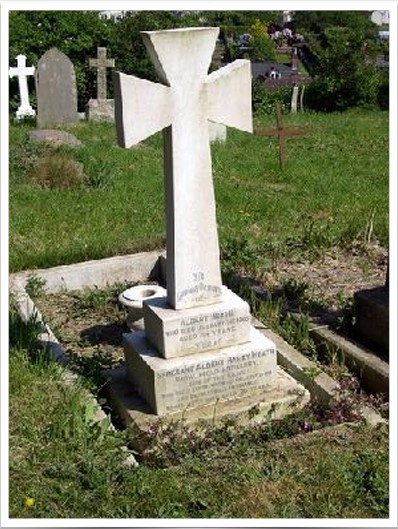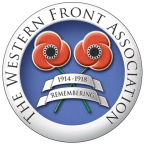‘A’ Battery, 76th Brigade, Royal Field Artillery

Albert Harry Heath, known as Harry, was the son of Albert, the licensee of the Crown Inn, Long Street, Dursley and Anne Heath, who worked in the local telephone exchange. He was born in Dursley in 1890 and before the war had worked at R A Lister & Co in the town.
Harry was described as a genial fellow, having many friends. He was a footballer and had belonged to the Territorials. He had also been a member of Dursley Cricket Club, good as a wicket keeper and a batsman ‘of the dashing type’ who could be relied on to make runs.
In the summer of 1914 he had moved to the Kilburn area of London.
In November 1914 he enlisted in the Royal Horse Artillery in London but may have transferred to the 76th Brigade, Royal Field Artillery shortly after, as from December 1914 to September 1915 he was stationed at Cork in Ireland. The Brigade had been attached to the 16th (Irish) Division.
On 2 September 1915 the Brigade embarked for France, where it transferred from 16th Division to the Guards Division and fired its guns in anger on the 10th of that month near Haverskerque.
In April 1916 Serjeant Heath was severely wounded in his right eye and shoulder by shrapnel and evacuated to hospital in Boulogne. He was repatriated to England and sent to the 2nd War Hospital in Northfields, Birmingham. A specialist was called from London and it was found necessary to remove the eye and a one and a half inch metal fragment was taken from his throat. The Cheltenham Chronicle of 6 May 1916 reported that his first words following the operation were: ‘Is the gun safe?’. Sadly, he failed to recover from his wounds and the operation, and died in hospital on 27 April 1916, aged 26.
As an Army man Harry was said to have been brave and fearless, one of the best non-commissioned officers.
Serjeant Heath’s last resting place is in Woodmancote (St Mark’s) Churchyard, where a stone cross marks his grave; his parents are buried in the same plot. He is commemorated on the Dursley War Memorial.
(Taken from Dursley 1914-18 – a study of a small town at war by David Evans and The Long, Long Trail website)
